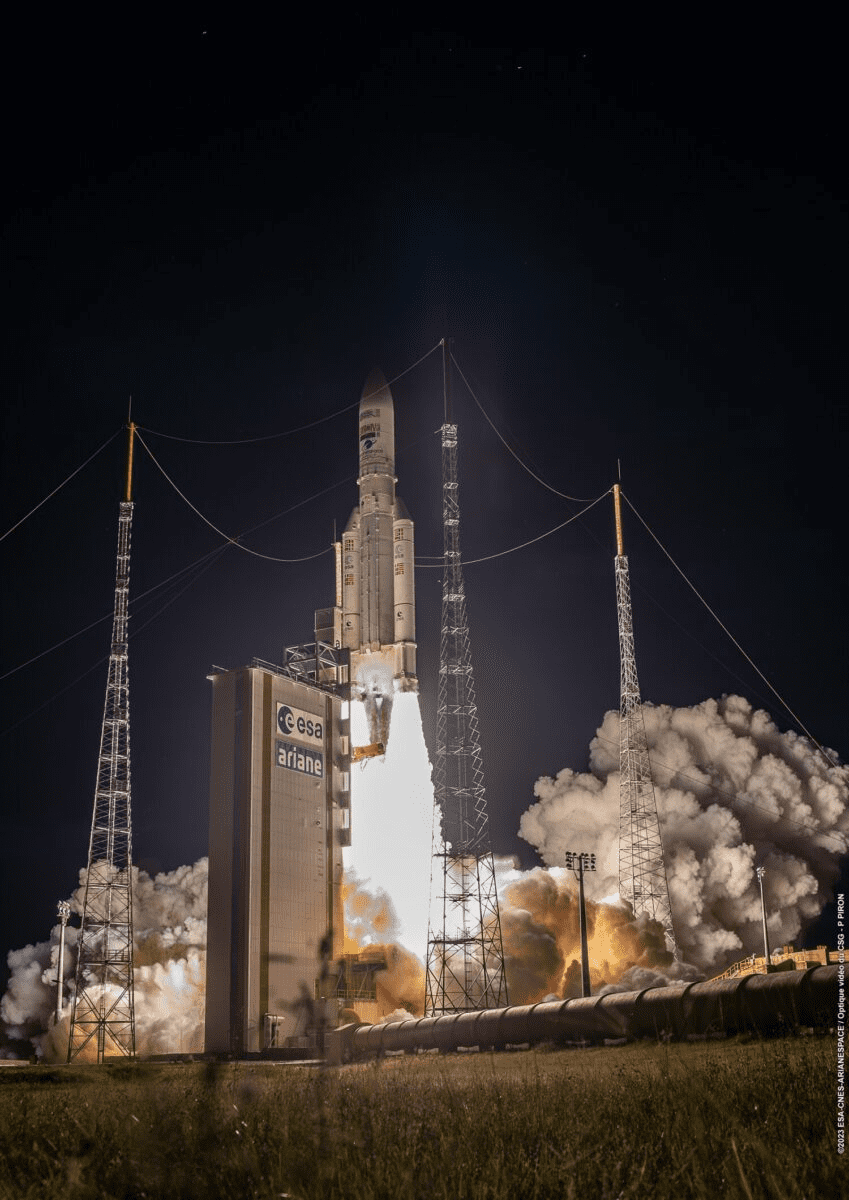With the successful launch of two telecom satellites, the Ariane-5 rocket, Europe’s trusted workhorse for nearly three decades, concluded its career. Despite experiencing only two outright failures, the Ariane-5 is widely recognized as a highly successful launcher, with a track record of 117 missions.
The retirement, however, of the Ariane-5 leaves Europe in a challenging position, as there is currently no ready replacement available. The Ariane-6, Europe’s next-generation rocket, is still in the development and testing phases and may not be ready for its debut until next year.
Along with the grounding of the Vega, a clue to a previous in-flight failure, the unavailability of the Russian Soyuz rocket has further exacerbated Europe’s launcher crisis. Due to their dependency on external providers, European satellites have resorted to using American launch services.
Similar Post
Europe’s reliance on non-European launch capabilities is further emphasized by the recent launch of the Euclid space telescope on a SpaceX Falcon 9. Joseph Aschbacher, director general of Europe’s Space Agency, has acknowledged the acute launcher crisis that Europe currently faces.
Deploying two satellites, including a French defense satellite named Syracuse 4B and a German demonstration spacecraft named Heinrich Hertz, the final mission of the Ariane-5 was carried out from the Kourou spacecraft in French Guyana.
Once operational, the Ariane-6 aims to address the cost challenges faced by the Ariane-5 in the face of competition from SpaceX. The CEO of Airbus, Guillaume Faury, has expressed concerns about Europe’s vulnerability in space and highlighted the importance of the Ariane 6.
European Space Agency officials have expressed confidence that the Ariane-6 will deliver similar performance and accuracy, despite the retirement of the Ariane-5. The renowned accuracy of the Ariane-5 was demonstrated during the launch of the James Webb Space Telescope, where the observatory did not require any trajectory correction.
The increasing unsustainability of the Ariane-5’s production costs compared to SpaceX’s reusable Falcon rockets drove the decision to develop the Ariane-6. Expected to be at least 40% cheaper than its predecessor, the Ariane-6 will still follow an expendable design, requiring a new Rocket for each mission.
While SpaceX is already introducing larger rockets that further reduce launch prices, Europe’s move towards reusability is anticipated to be realized in the 2030s. Adding to its remarkable legacy of launching over 230 satellites, the final flight of the Ariane successfully delivered the Heinrich Hrtz and Syracuse 4B satellites to a geostationary orbit.
The Rosetta comet-chaser (2004), the environmental observer Envisat (2002), and the space station freighter ATV (2008) are some of the notable missions launched by the Ariane-5. Originally conceptualized as part of a plan to launch the astronaut shuttle Hermes, the Ariane-5 evolved into a satellite-launching vehicle due to cost concerns.
Begun in 1973, the development of the Ariane series of launchers began, and the first Ariane-1 successfully lifted off in 1979. When the rocket deviated from its intended trajectory and self-destructed after 40 seconds, the maiden flight of the Ariane-5 in 1996 encountered a failure.
A significant milestone was Ariane’s collaboration with NASA and the Canadian Space Agency in launching the James Webb Space Telescope in 2021. The Ariane-5 was also utilized by Europe’s Comet- chasing Rosetta mission, which deployed a landing probe in 2014.
The final launch delays of the Ariane-5 were attributed to technical issues and adverse weather conditions. In order to better compete with Elon Musk’s SpaceX and its Falcon 9 rocket, the Ariane 6 is being developed. Initially led by France, Germany, and the U.K., the Ariane series of launchers played a crucial role in commercial launches.
The aim of Europe’s development of the Ariane-6 is to provide a more cost-effective solution to meet market demands. The Ariane-6’s first test launch is scheduled for the end of this year, followed by its first commercial operation next year. Raising the stakes for the successful deployment of the Ariane-6, the retirement of the Ariane-5 signifies the end of an era for Europe’s access to space. The European space industry remains optimistic about the future and the capabilities of the upcoming Ariane-6 rocket, despite the challenges and competition.


















